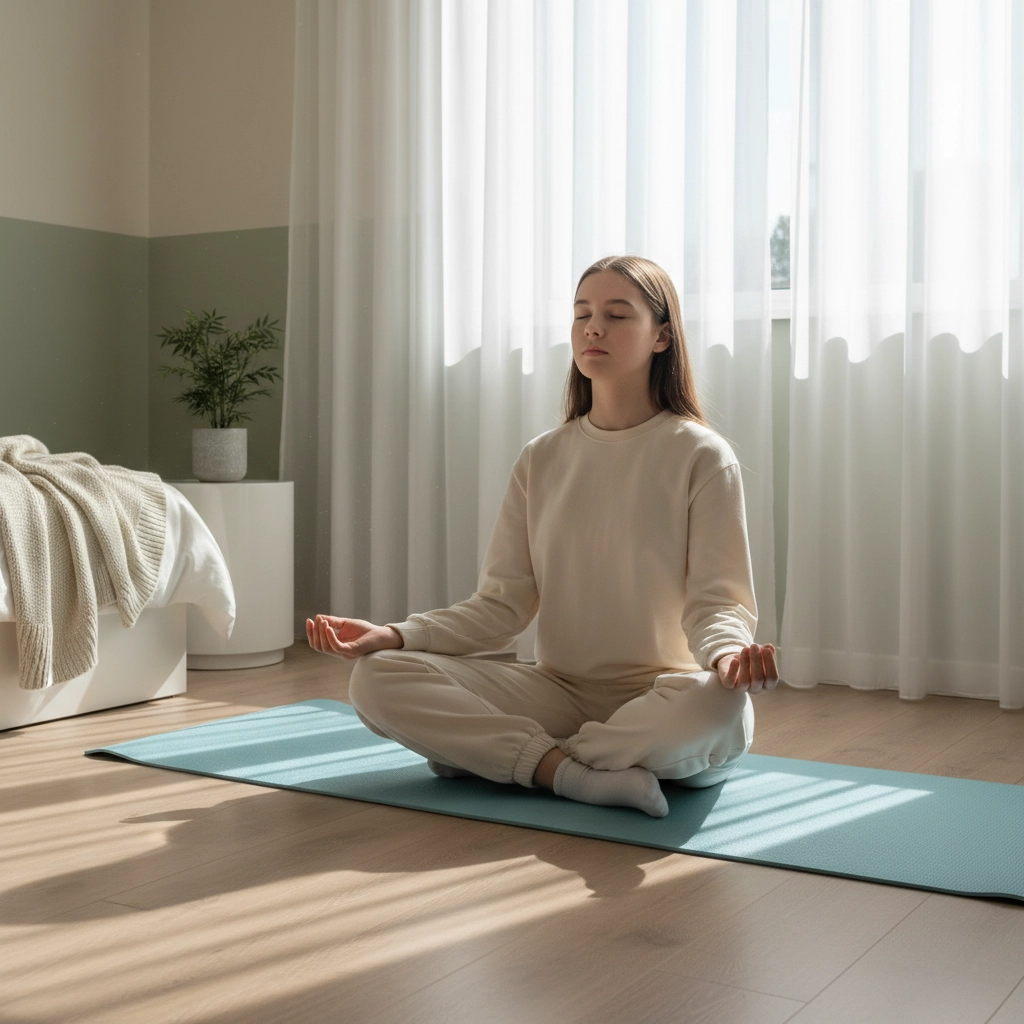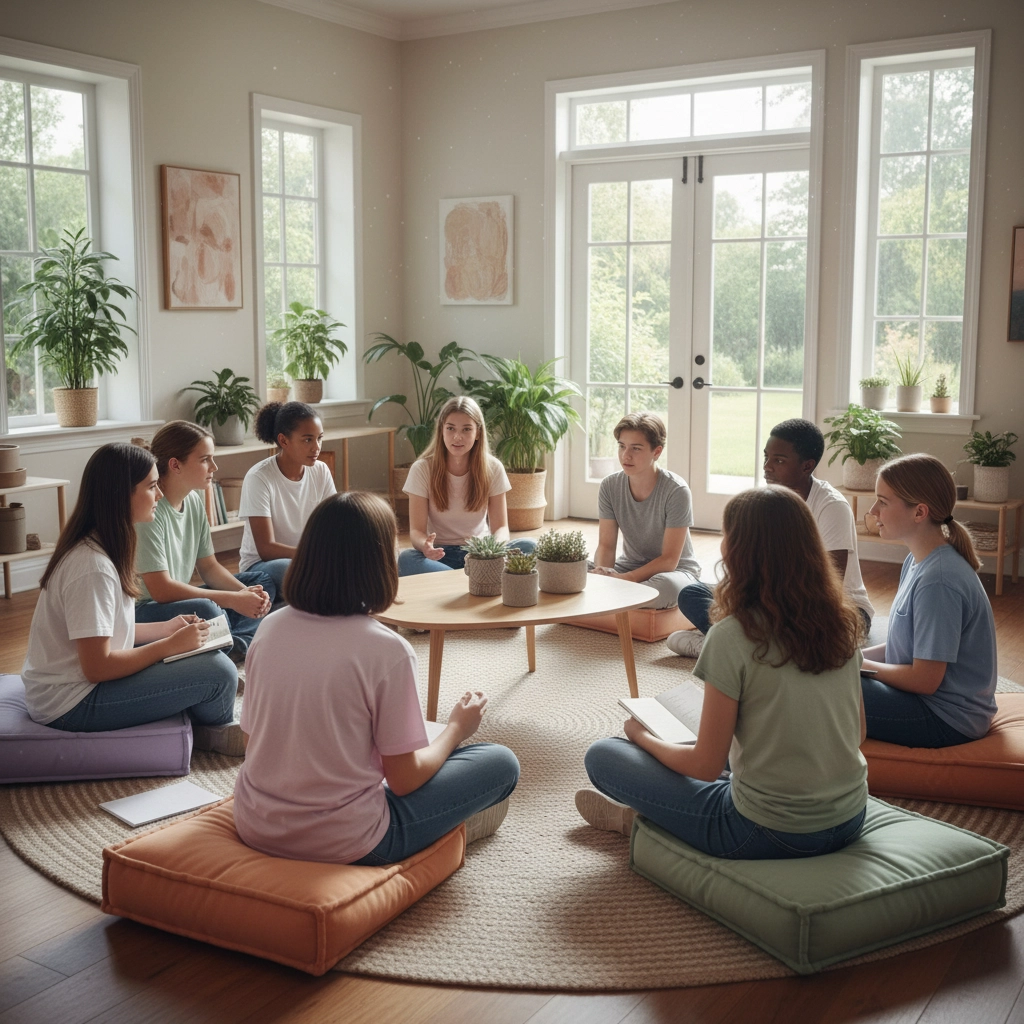Struggling with Rising Teen Anxiety? 10 Research-Backed Strategies Every Chicagoland Family Should Try First
- clairestew
- Oct 2
- 5 min read
Teen anxiety has reached unprecedented levels across our communities. In Chicago specifically, an overwhelming 94% of youth identify mental health as a major concern affecting their generation. Nationally, anxiety rates among children and adolescents jumped from 7.1% in 2016 to 10.6% in 2022: that's nearly one in ten young people struggling with anxiety disorders.
For Chicagoland families navigating this challenge, research offers hope. We've gathered evidence-based strategies that teens themselves report as most effective for managing anxiety. These approaches work best when families, schools, and communities collaborate to create supportive environments where young people can thrive.
Start with Breathing: Your Teen's Most Accessible Tool
Deep Breathing Exercises
When anxiety strikes, breathing exercises give teens immediate relief by shifting focus from racing thoughts to their body's natural rhythm. Teens report that breathing techniques help them "focus on breathing instead of thoughts" and create mental space during overwhelming moments.
Try introducing your teen to box breathing: inhale for four counts, hold for four, exhale for four, hold for four. Many teens prefer guided breathing apps with interactive visualizations, or apps that connect to smartwatches to automatically trigger breathing exercises when heart rate increases.

Progressive Muscle Relaxation
This technique involves tensing and then releasing different muscle groups throughout the body. Teens describe it as a way to "have all your stress and all your feelings and then just let them go." Start with toes and work upward, holding tension for five seconds before releasing. This physical approach helps teens recognize the difference between tension and relaxation.
Ground Your Teen in the Present Moment
The 5-4-3-2-1 Technique
When overwhelming thoughts take over, grounding techniques help disrupt uncomfortable feelings and bring teens back to the present. The 5-4-3-2-1 method is particularly effective:
Name 5 things you can see
Identify 4 things you can hear
Touch 3 different textures
Notice 2 scents around you
Recognize 1 taste in your mouth
This technique redirects attention from anxious thoughts to immediate sensory experiences, creating an anchor in reality.
Sensory Engagement
Some teens find that engaging specific senses helps manage anxiety episodes. Research shows that salty and sour tastes can be particularly grounding during moments of high anxiety. Keep healthy options like pickles, lemon slices, or sea salt available for your teen to try.
Build Connection Through Communication
Family Conversations and Validation
Teens feel significantly less isolated when they can share experiences with family members. These conversations provide crucial validation: letting your teen know their feelings are normal and manageable. Create regular check-ins where your teen feels safe discussing their anxiety without judgment or immediate problem-solving attempts.
Peer Support Networks
Anonymous peer support creates safe spaces for teens to share experiences and advice with others facing similar challenges. Consider connecting your teen with support groups through local community organizations or school counseling programs.

Encourage Self-Monitoring and Awareness
Journaling for Processing
Writing through anxiety helps teens process their experiences while building confidence and motivation to address stressors. Encourage your teen to write freely about their feelings, worries, or daily experiences. There's no right or wrong way to journal: the goal is creating space for emotional expression.
Mood Tracking with Purpose
Mood tracking becomes valuable when it reveals patterns between anxiety levels and daily activities, sleep, social interactions, or school stress. Many teens prefer simple pop-up mood trackers that can immediately suggest coping techniques based on their current anxiety level.
Help your teen identify their personal anxiety triggers by tracking mood alongside activities, sleep patterns, and social interactions. This awareness empowers them to anticipate and prepare for challenging situations.
Education Empowers Understanding
Psychoeducation About Anxiety
Understanding anxiety patterns and origins helps teens contextualize their experiences. Share age-appropriate information about how anxiety works in the brain, why it developed as a survival mechanism, and how it can be managed effectively.
When teens understand that anxiety is treatable and temporary, they feel more hopeful about their ability to cope with challenging emotions.
Crisis Resources and Professional Support
Every teen should know how to access immediate help when needed. Create a crisis plan together that includes:
Local crisis hotline numbers
Trusted adults they can contact
Safe spaces they can go to
Professional mental health resources in your area
Research emphasizes the importance of "warm handoffs": seamless transitions to professional help when teens need additional support beyond family strategies.

Embrace Strategy Variety
Multiple Tools for Different Situations
Rather than relying on a single approach, teens benefit from having multiple anxiety-management techniques available. Different strategies work better for different types of anxiety or various situations. Encourage your teen to experiment and discover what works best for them.
Some teens prefer physical techniques like breathing or muscle relaxation, while others respond better to cognitive strategies like journaling or grounding. The goal is building a personalized toolkit they can access independently.
Create Community Connections
Professional Mental Health Support
Teens specifically request access to mental health professionals who can provide guidance in supportive, non-judgmental environments. Professional support becomes especially important when anxiety significantly impacts daily functioning, school performance, or social relationships.
School and Community Resources
Chicago-area schools increasingly offer mental health support through counselors, social workers, and peer support programs. Many libraries now partner with healthcare organizations to provide teen mental health resources and programming.
Connect with your teen's school counselor to understand available support services and how to access them when needed.
Address Underlying Community Stressors
Understanding Chicago's Context
With one in four Chicago youth under 18 living in poverty and 43.5% of our youngest residents facing economic hardship, teen anxiety often reflects broader community stressors beyond individual family situations.
Effective anxiety management combines individual coping strategies with community support systems that address underlying factors affecting young people's mental health: housing stability, food security, educational support, and safe community spaces.
Building Collaborative Support
Research shows that addressing teen anxiety requires collaboration between families, pediatricians, mental health providers, community leaders, and educators. As parents, you're part of a larger network working to support your teen's wellbeing.
Taking the First Steps
Start with one or two strategies that feel most accessible for your family. Remember that building mental health skills takes practice: just like learning any new skill. Be patient with your teen and yourself as you navigate this journey together.
If your teen's anxiety significantly impacts their daily life, school attendance, or relationships, reach out for professional support. Early intervention often prevents anxiety from becoming more severe and helps teens develop effective coping skills sooner.
For immediate mental health support, Chicago families can call or text 988 for the Suicide & Crisis Lifeline, available 24/7.
Remember, you're not alone in supporting your teen through anxiety challenges. Our Chicagoland community offers resources, support, and hope for families navigating mental health concerns together.

Comments